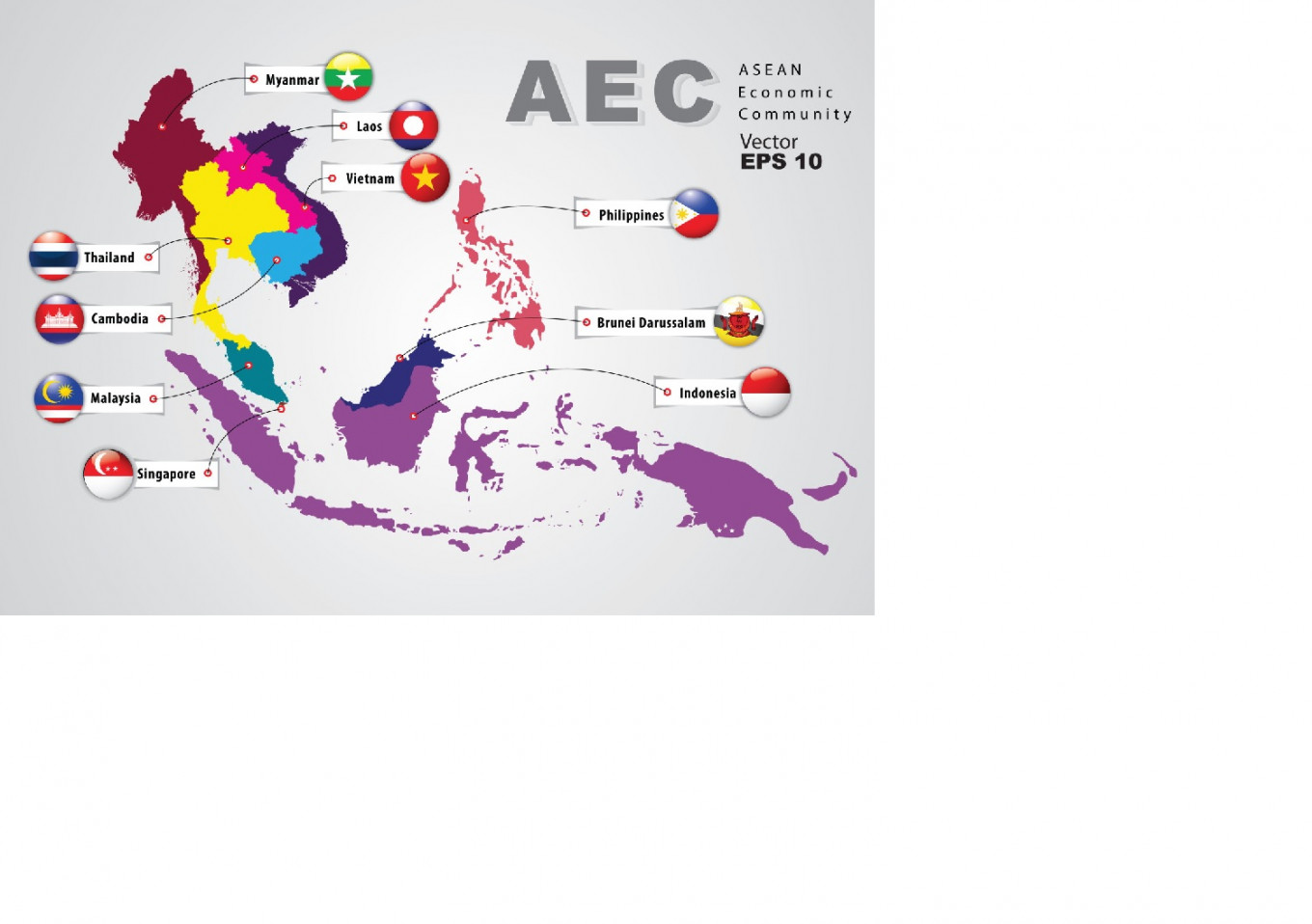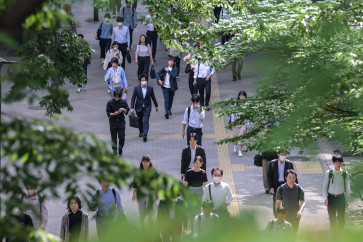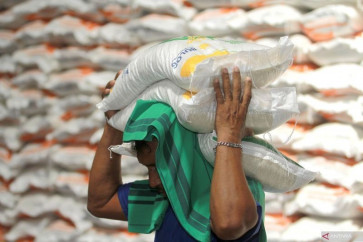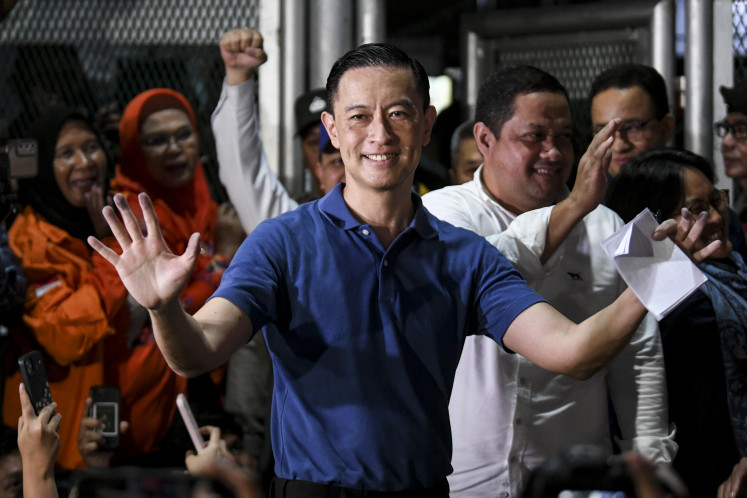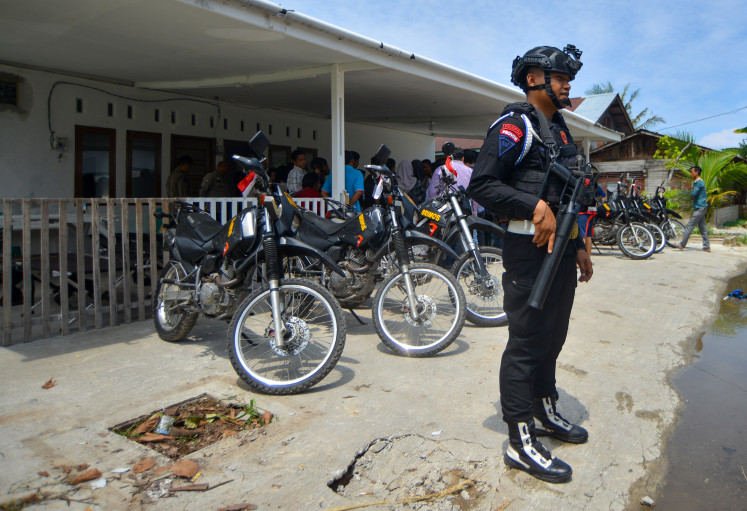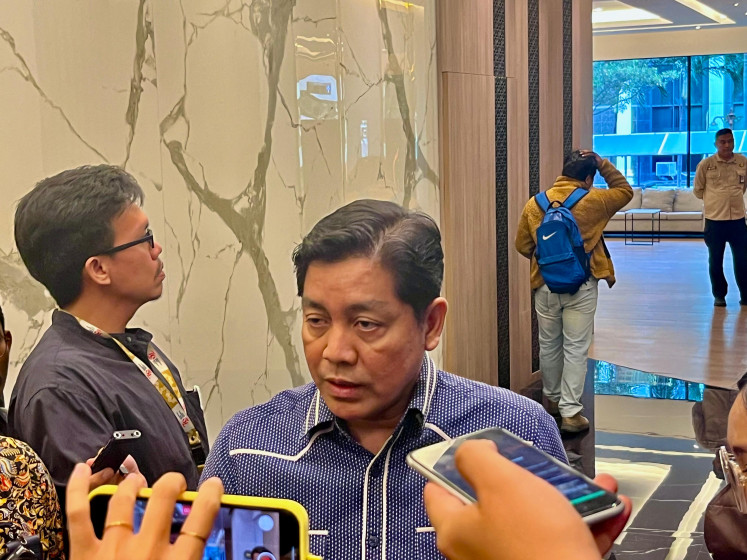Popular Reads
Top Results
Can't find what you're looking for?
View all search resultsPopular Reads
Top Results
Can't find what you're looking for?
View all search resultsIndonesia in the new landscape of ASEAN integration
Indonesia needs to enhance value chains participation to adapt to the new landscape of ASEAN economic integration.
Change text size
Gift Premium Articles
to Anyone
F
ifty-four years after the ASEAN Declaration on Aug. 8, 1967, Indonesia plays a strategic role in the region’s economic integration. At the 2003 Bali Summit, Indonesia led the initiative to create an ASEAN Economic Community (AEC) by 2020, which was then accelerated to 2015. At the 2011 Bali Summit, Indonesia headed the introduction of the Regional Comprehensive Economic Partnership (RCEP).
The first phase of the AEC established at the end of 2015 integrated 10 ASEAN member states as a single market and production base, with investments, services, free movement of goods, skilled labor and flow of capital among its key bases. The second phase, under the 2025 AEC Blueprint (AEC 2025), aims to achieve a vision of having an AEC that is highly integrated, competitive, innovative, dynamic and integrated with the global economy.
The RCEP, signed on Nov. 15, 2020, integrates ASEAN with major Asia Pacific economies – China, Japan, Korea, Australia, and New Zealand – into the world’s largest regional trade pact, albeit not the most comprehensive.
AEC 2025 and the RCEP will be the new landscape of ASEAN economic integration, emphasizing regional value chains (RVC) and global value chains (GVC). A broader objective of AEC 2025 to become a highly integrated and competitive economy is to enhance the region’s participation in GVCs. The RCEP, according to its preamble, seeks to establish clear and mutually advantageous rules to facilitate trade and investment, including participation in regional and global supply chains.
Indonesia needs to enhance value chains participation to adapt to the new landscape of ASEAN economic integration. Otherwise, Southeast Asia’s largest economy might not be able to gain optimal benefits from the integration.
Value chains are the system where production and distribution are held jointly by several countries. More complex products and division of labor allow countries to participate in international trade by specializing in specific tasks without the need to produce entire goods. Trade in intermediate goods, connecting different production stages, plays an important role.
The value chains consist of two participation linkages: forward (a country’s value-added export goes into further export of other countries) and backward (foreign value-added in gross export of a country).
A study by the Trade Ministry (2015) concluded that Indonesia's value chains in the RCEP are dominated by low-technology industries that produce raw/intermediate materials, like metal and minerals sourced from natural resources. Meanwhile, trade in the RCEP region — especially among Indonesia, Malaysia, the Philippines, Singapore, Thailand, China, Korea and Japan — is pushed by intra-industry trade of intermediate goods, which will be increased when those economies become more industrialized.
A report by the Islamic Development Bank and Asian Development Bank (2019) revealed that Indonesia’s forward GVC participation dropped from 21.5 percent in 2000 to 12.9 percent in 2017, while backward participation fell from 16.9 percent to 10.1 percent. Indonesia’s international trade was more bilateral than global. A large portion of Indonesia’s domestic value-added is used by its importers to produce final products for domestic consumption. Most of the value-added embedded in Indonesia’s intermediate goods import is used in the final production for domestic consumption rather than for exports.
According to a World Bank Development Report (2020), from 1990 to 2015, Indonesia transitioned from commodities to the specialization of limited manufacturing GVCs in some manufacturing exports, often alongside commodities exports, and exhibited medium backward integration. Meanwhile, countries like China, India and Thailand have moved into advanced manufacturing and services from limited manufacturing GVCs.
Amid limited and declining participation in value chains, the recent policy is driving Indonesia to pursue a kind of self-sufficient industrialization. This is signified in the 35 percent import substitution program in electronics, chemical, automotive, food and beverages, textile and garment, pharmaceutical and medical device industries. The strategies are deepening industrial structure, autonomy in raw materials and production, favorable regulations and incentives, and domestic product utilization.
Government Regulation No. 28/2021 on administering the industry sector has a similar policy intent. The regulation prioritizes domestic raw materials and intermediate goods. Imports will be facilitated only if the goods are not locally produced or local products’ volume and/or quality standards are not sufficient.
Ideally, the industrial policy must prevent Indonesia from moving farther away from value chains. Import substitution should not cause inefficiency along with the weakening of industrial competitiveness from upstream to downstream in the domestic and export markets. The facilitation of material supply has to guarantee equal access to local and import sources.
Pedego manufacturing is an example of how equal access to materials helps value chains participation. Pedego is an electric bicycle assembled in Vietnam and exported to the United States with parts and components that come from a dozen countries in Europe and Asia. Indonesia contributes 1.7 percent of the bike’s value by supplying a German tire brand manufactured by a Korean company. The tire is made in Indonesia with rubber imported from Thailand (backward linkage) for exports to Vietnam (forward linkage). Rubber from Thailand, not from Indonesia, was selected presumably because its quality matches the specifications for Pedego’s tires.
The new landscape of ASEAN economic integration provides encouraging rules for participation in value chains. Under the RCEP, Indonesia can produce, for example, bikes or their components — frames, pedals, gears, brakes and so on — for shipment to the other 14 RCEP countries with preferential tariffs (low or zero), as long as they qualify for the RCEP rules of origin. Among the criteria is that at least 40 percent of the value of the goods originates in Indonesia and the rest from anywhere around the world.
The 40 percent threshold was previously applied in trade among the 10 ASEAN member countries under the ASEAN Trade in Goods Agreement. Adopting unified rules of origin in the 15 RCEP countries – including advanced industrial and trading countries like China, Japan and South Korea — will help competitive industries to participate in RVCs and GVCs.
The competitiveness is signified by the sophisticated capacity to efficiently transform certain materials or products into higher value-added products.
Creating such competitiveness requires a favorable environment. It is an environment where the industries operate under economic stability, equal access to the finest materials sources, minor nontariff barriers, high-quality infrastructure for efficient logistics and distribution, ample skilled labor, as well as intensive research and innovation.
***
The writer is a managing partner at Trade-off Indonesia, an economic and business advisory service.

